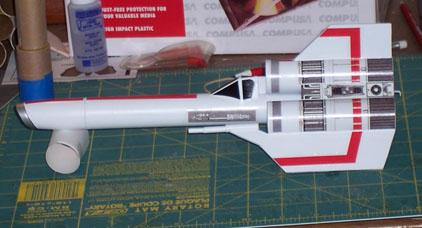Justin
Well-Known Member
- Joined
- Apr 2, 2009
- Messages
- 570
- Reaction score
- 0
Originally posted by Mister Rogers
Hey Justin,
is the hollow nose opening a desired design element ? If you wanted to you could cut a piece of styrene (plastic) to fit the opening and glue it flush like a plate. It would make sense that it would cut down on drag but since it is at an angle it may try to push the rocket. I don't know how you could sim thatJust a thought....
Sorry I didn't answer this before. Yes, the Vipers on Battlestar Gallactica had hollow noses. You know, you HAVE to have air intakes for your engines while flying in a vacume
I'm not sure how deep the hollow was however. I want to say for the "scale" of mine it should be 1/2" ish deep. I am not going to create the plate though. Just paint the inside flat black to hide the weight.
This pic is not related to anything I just said






